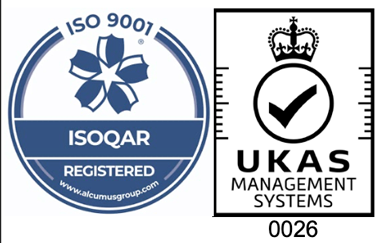What is sponge rubber used for?
1st April, 2020
As a highly versatile product, sponge rubber can be seen across a variety of applications. Our own flagship product is a form of sponge rubber, designed to be used as a door seal in high-pressure environments. In this blog, we take you through the common uses of this rubber type, in order for you to ascertain a better understanding of this useful product.
What are the properties of sponge rubber?
Sponge rubber can be designed to be open cell or closed cell, but is most commonly used as closed cell and is also known as expanded rubber. Inside there are enclosed capsules, or cells, that do not connect with each other. They look very similar to the “bubbles” in a piece of extremely dense foam.
These cell walls are useful for preventing water, air, and to some extent sound from passing through the material. Closed cell sponge rubber can be modified to embody various products necessary to make it suitable for a specific application.
Closed cell EPDM sponge rubber offers great ozone resistance and stands up well to adverse weather conditions. However, it is vulnerable to certain fuels and oils and may fall short of UL flame ratings unless a suitable additive is added to improve its flame-retardant qualities.
Closed cell silicone sponge rubber is stable at both high and low-temperature extremes. It’s characteristically less flame-resistant than many other closed cell sponge rubbers but does offer excellent sunlight and ozone degradation resistance.
Neoprene closed cell sponge rubber is designed to be more flame resistant than many of its counterparts. It can withstand intermittent exposure to temperatures of up to approximately 90°C, and with careful compound manipulation can resist light oil contact, acids, alkalis, and ozone damage.
These are by no means the only types of closed cell sponge rubber, but they are certainly some of the most common.
What are the benefits?
Sponge rubber can be laminated with adhesive, cut to your preferred width, or even die cut for more bespoke applications. It is a truly versatile material, offering the following advantages:
- Excellent sealing abilities
- Option to be specified in high, medium, or low-density firmness
- Well controlled compression and recovery
- Excellent shock absorption capabilities
- Ability to be formulated from a variety of compounds
What are the applications?
There are many applications for sponge rubber products, but many will come from the automotive, public transport, marine, and aviation sectors. This is due to the high volume of high-quality, bespoke door seals required across these industries.
For example, the London Underground uses a sponge rubber material called HT 800 to seal and protect outdoor communication, electronics, and lighting enclosures whilst simultaneously providing protection against fire and wind. Sponge Rubber is also commonly used to produce vibration minimising gaskets and shock absorbing cushions.
It is also used quite commonly as insulation, particularly EPDM blends with foam-like properties. The closed cell structure of this material makes it perfect for providing an effective insulate that is malleable enough to be manoeuvred into wall cavities, and as fitted soundproofing in recording studios and on TV sets.
Sponge Rubber from Aquaseal
Aquaseal Rubber manufactures a wide range of Seals and Gaskets, as well as related foam and rubber products. If you think sponge rubber could be the right material for your bespoke application, get in touch with a member of the Aquaseal team to discuss your brief. You can email us at enquiries@aquasealrubber.co.uk, or give us a ring on 0191 266 0934.
Related Posts
Find out more about sponge rubber in our other blog posts.


